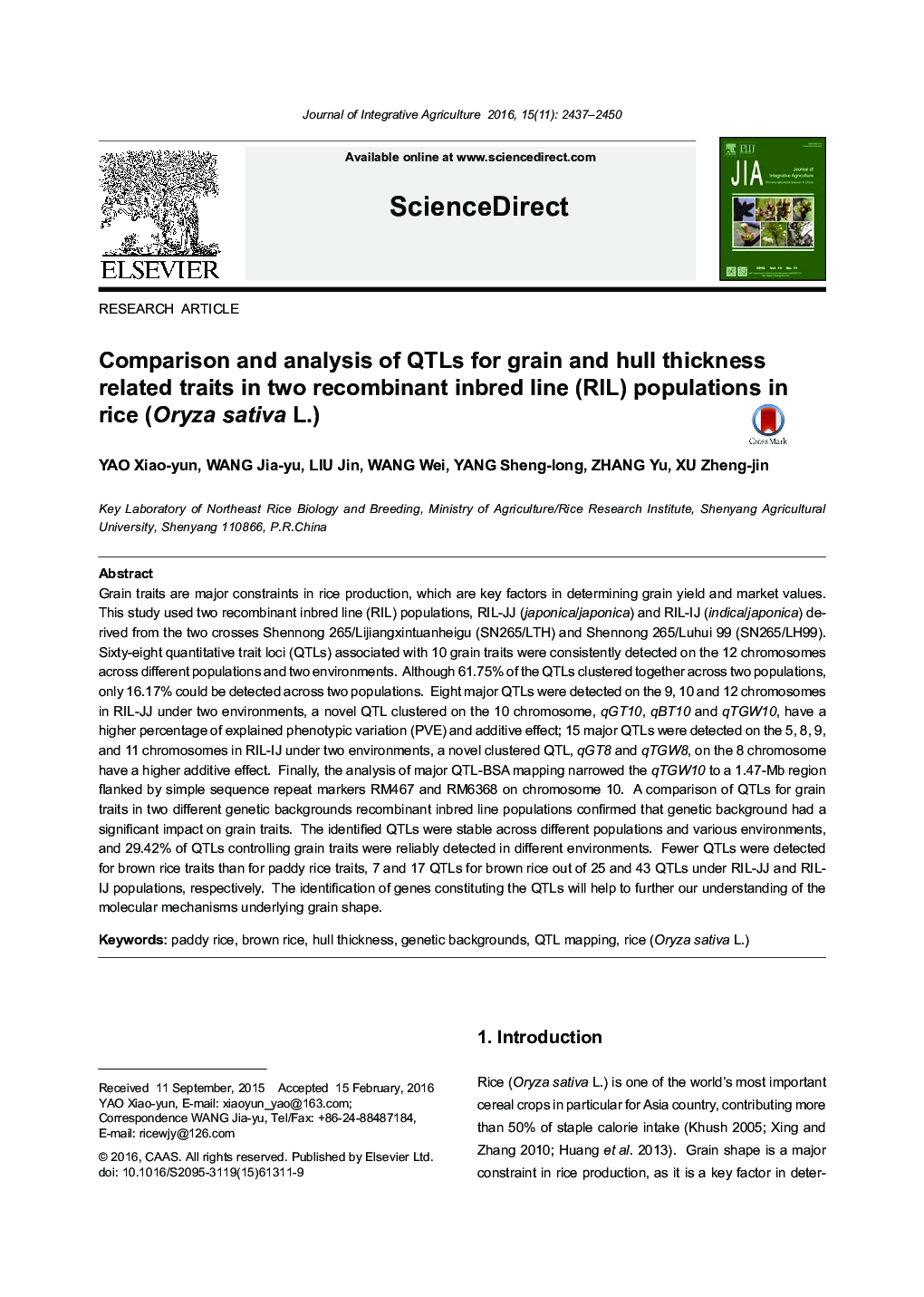| Article ID | Journal | Published Year | Pages | File Type |
|---|---|---|---|---|
| 8876198 | Journal of Integrative Agriculture | 2016 | 14 Pages |
Abstract
Grain traits are major constraints in rice production, which are key factors in determining grain yield and market values. This study used two recombinant inbred line (RIL) populations, RIL-JJ (japonica/japonica) and RIL-IJ (indica/japonica) derived from the two crosses Shennong 265/Lijiangxintuanheigu (SN265/LTH) and Shennong 265/Luhui 99 (SN265/LH99). Sixty-eight quantitative trait loci (QTLs) associated with 10 grain traits were consistently detected on the 12 chromosomes across different populations and two environments. Although 61.75% of the QTLs clustered together across two populations, only 16.17% could be detected across two populations. Eight major QTLs were detected on the 9, 10 and 12 chromosomes in RIL-JJ under two environments, a novel QTL clustered on the 10 chromosome, qGT10, qBT10 and qTGW10, have a higher percentage of explained phenotypic variation (PVE) and additive effect; 15 major QTLs were detected on the 5, 8, 9, and 11 chromosomes in RIL-IJ under two environments, a novel clustered QTL, qGT8 and qTGW8, on the 8 chromosome have a higher additive effect. Finally, the analysis of major QTL-BSA mapping narrowed the qTGW10 to a 1.47-Mb region flanked by simple sequence repeat markers RM467 and RM6368 on chromosome 10. A comparison of QTLs for grain traits in two different genetic backgrounds recombinant inbred line populations confirmed that genetic background had a significant impact on grain traits. The identified QTLs were stable across different populations and various environments, and 29.42% of QTLs controlling grain traits were reliably detected in different environments. Fewer QTLs were detected for brown rice traits than for paddy rice traits, 7 and 17 QTLs for brown rice out of 25 and 43 QTLs under RIL-JJ and RIL-IJ populations, respectively. The identification of genes constituting the QTLs will help to further our understanding of the molecular mechanisms underlying grain shape.
Related Topics
Life Sciences
Agricultural and Biological Sciences
Agricultural and Biological Sciences (General)
Authors
Xiao-yun YAO, Jia-yu WANG, Jin LIU, Wei WANG, Sheng-long YANG, Yu ZHANG, Zheng-jin XU,
